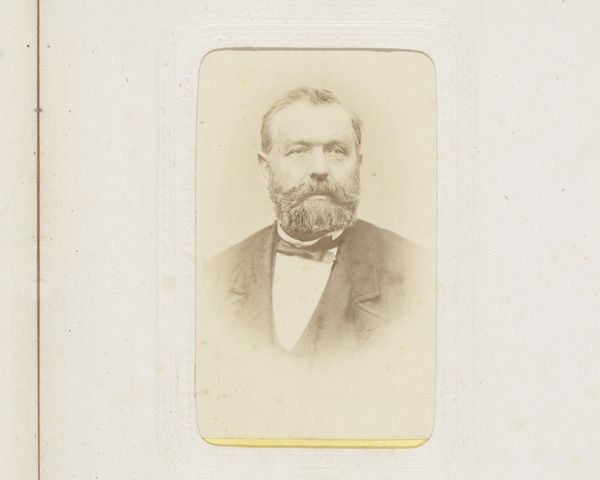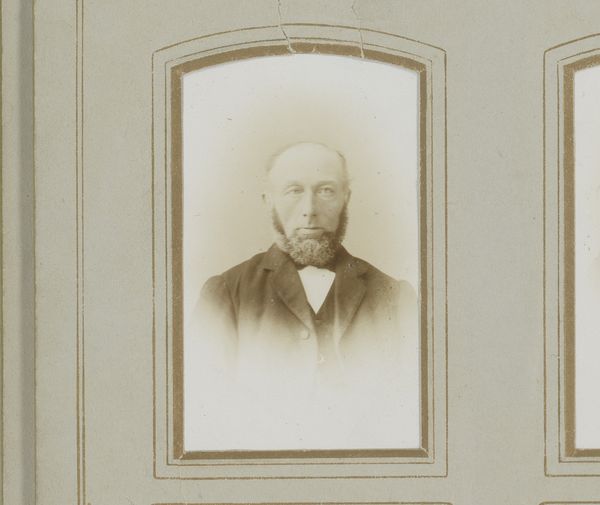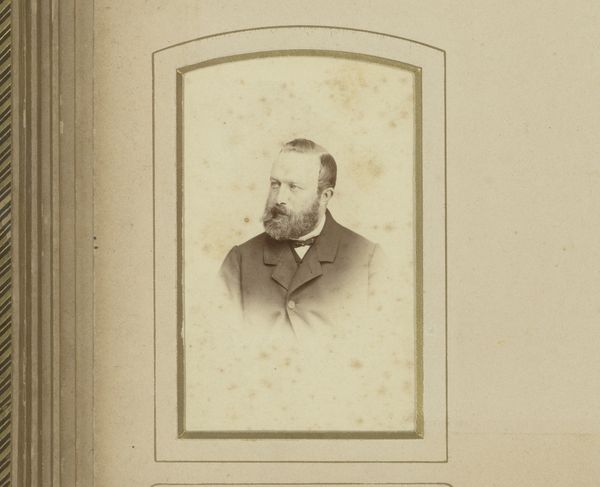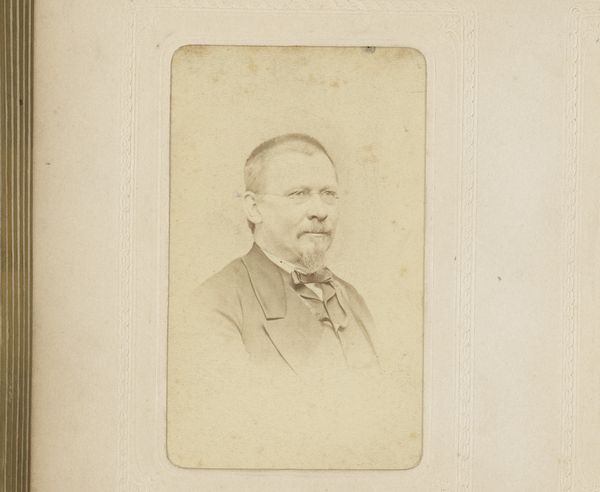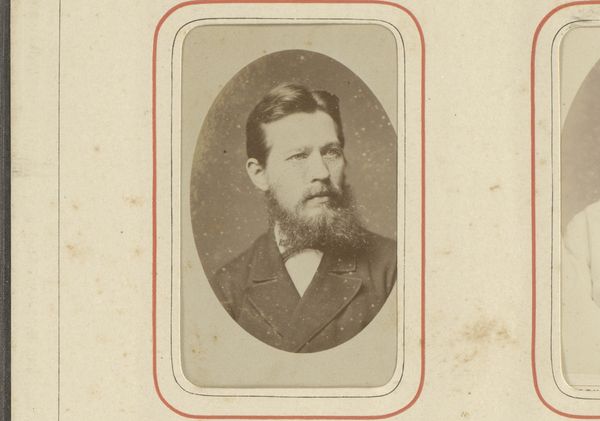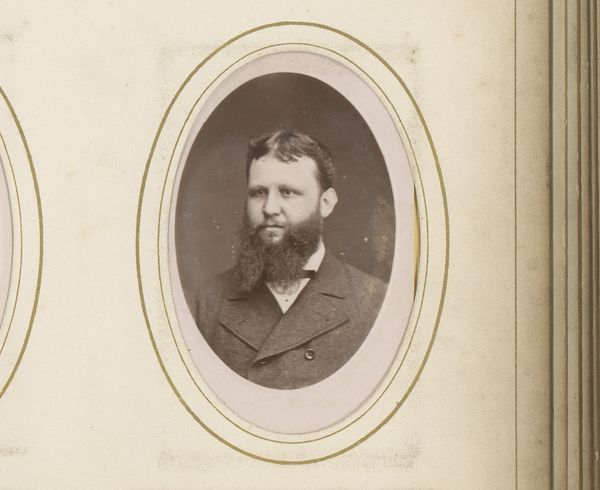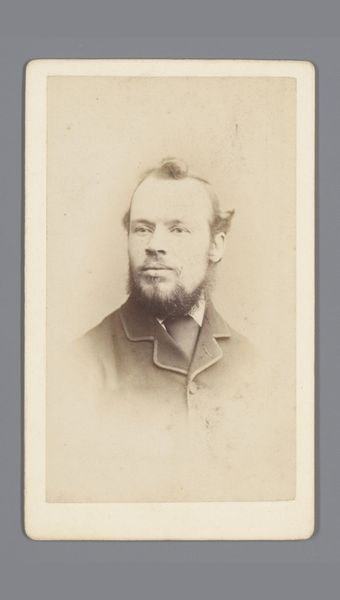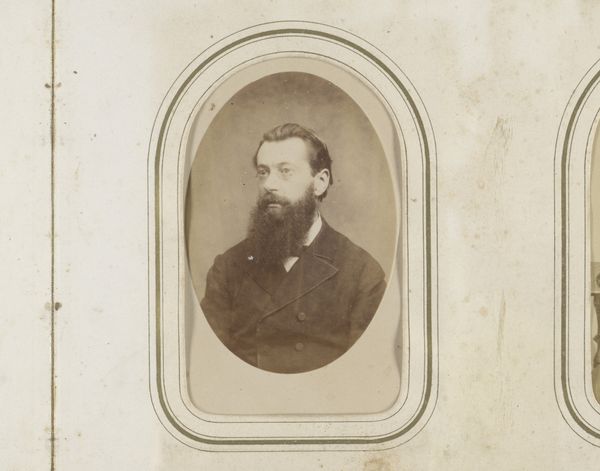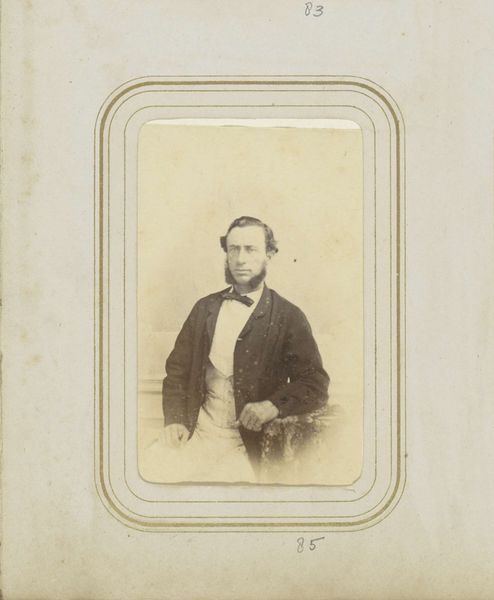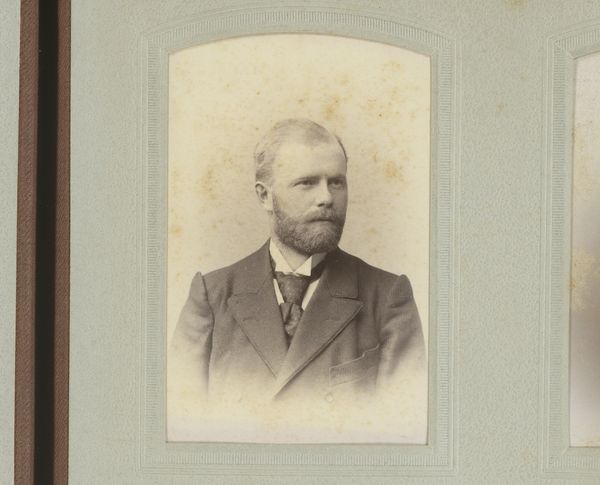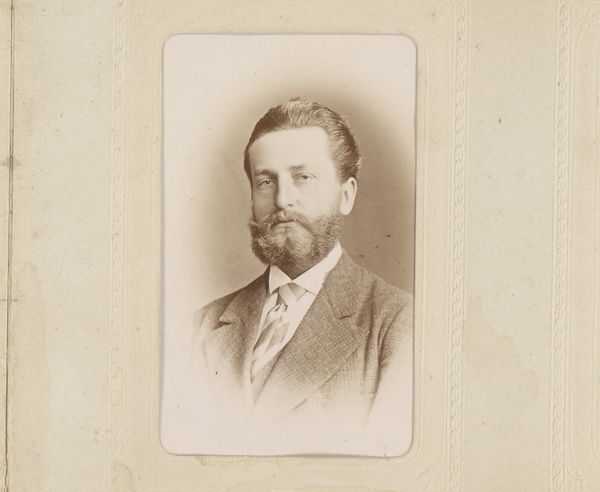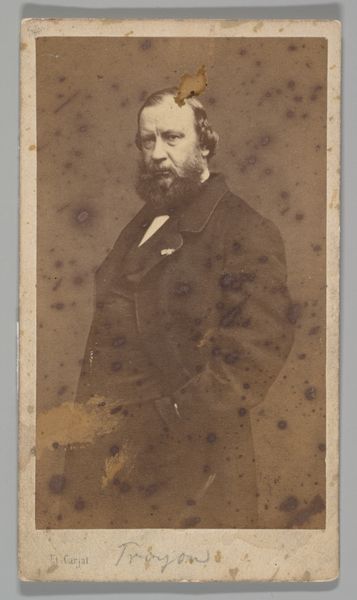
photography, albumen-print
#
portrait
#
photography
#
albumen-print
Dimensions: height 83 mm, width 52 mm
Copyright: Rijks Museum: Open Domain
Editor: We're looking at a portrait of Ren Meyer, probably taken sometime between 1860 and 1900. It's an albumen print. The photo is a bit faded, which gives the image an antique quality. What strikes me most is the subject's serious demeanor, hinting perhaps, at a stern personality or the constraints of photographic portraiture at the time. How do you interpret this work? Curator: Looking at Ren Meyer, it's crucial to situate this image within the evolving landscape of photographic representation during the late 19th century. Portraiture was becoming more accessible, moving away from being exclusively for the elite, but gender, class, and race still largely determined who was depicted and how. Considering this, what narratives might this portrait reinforce, or perhaps subtly challenge, regarding masculinity and social status during that era? The serious demeanor, as you pointed out, could be indicative of societal expectations imposed upon men to project an image of power and authority, but is it truly devoid of nuance? Editor: I suppose his serious demeanor could mask other feelings but societal expectation plays an important role. It’s interesting how photography, while democratizing representation, simultaneously entrenched existing power dynamics. So this image is an important piece for discussion, and thinking about the historical context it brings to life. Curator: Absolutely. Thinking critically about the forces shaping representation—both then and now—is paramount. Ren Meyer’s portrait invites us to consider how visual culture reinforces or challenges prevailing social norms. As photography advanced, what responsibilities did the photographer and subject share in shaping the narrative of such images, especially within the confines of established norms and practices? Editor: That gives me a lot to consider in approaching similar portraits! Curator: And it also challenges us to recognize how our own biases influence the interpretation of such images.
Comments
No comments
Be the first to comment and join the conversation on the ultimate creative platform.

